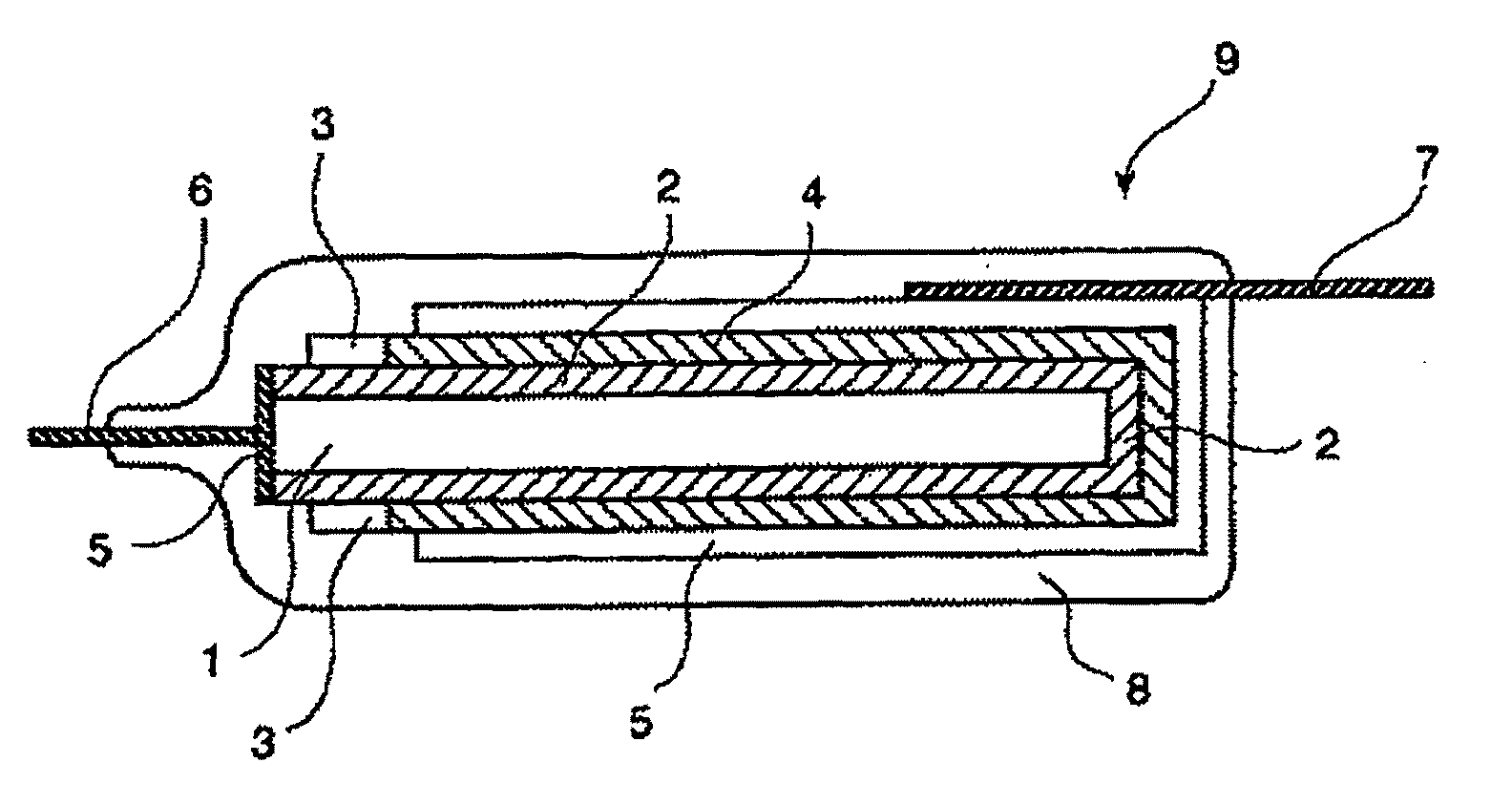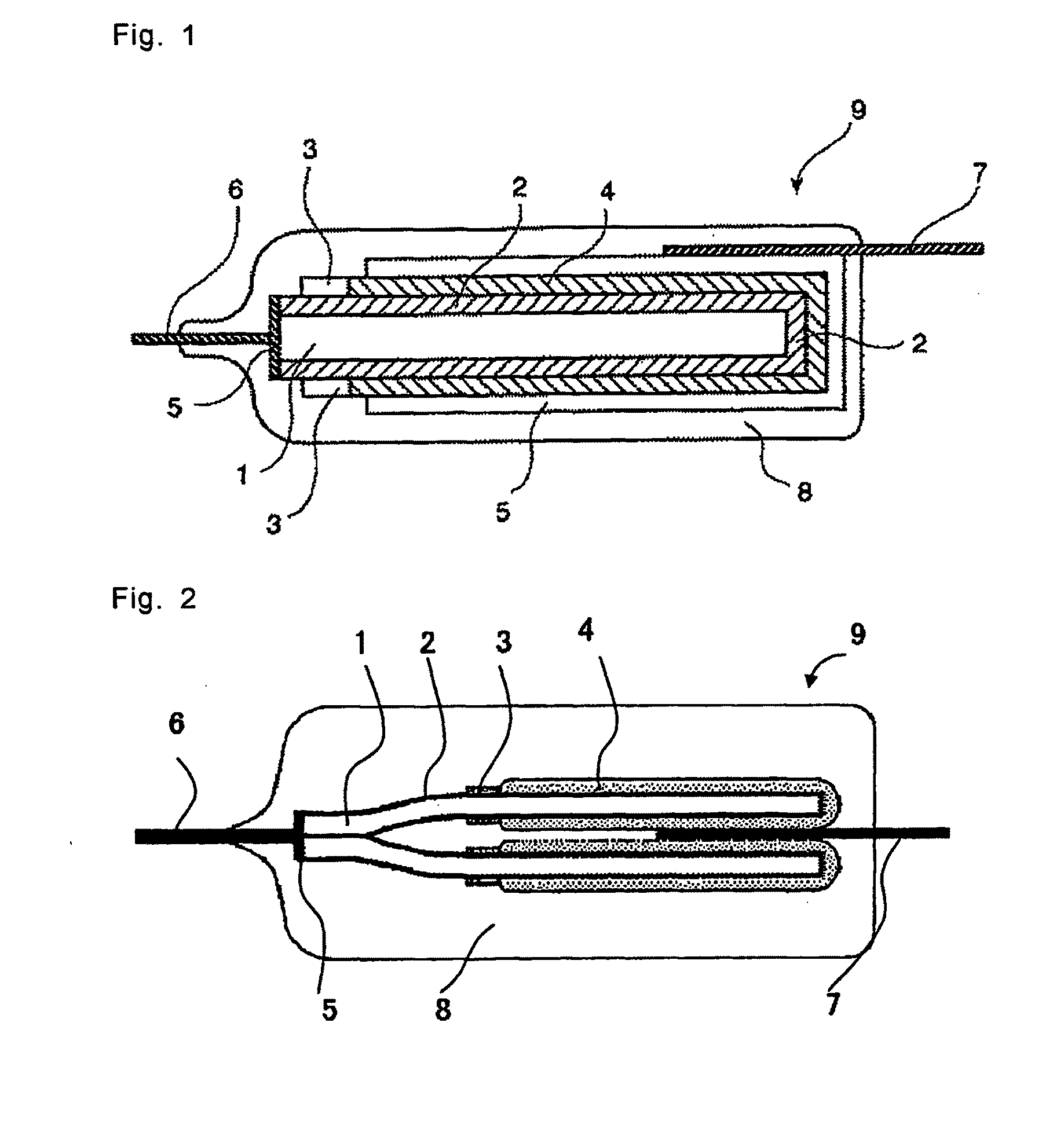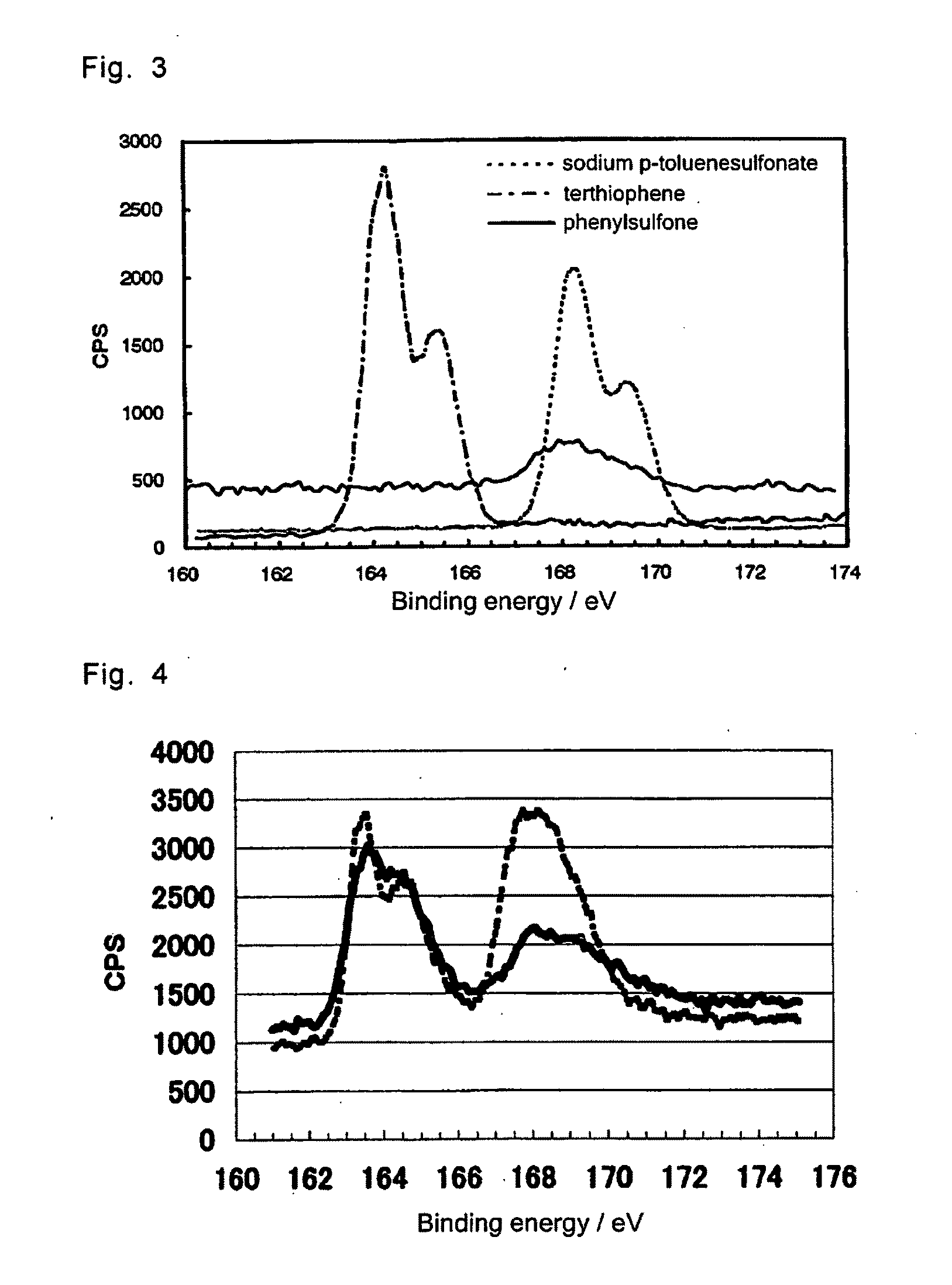Solid electrolytic capacitor and production method thereof
a technology production method, which is applied in the manufacture of electrolytic capacitors, electrolytic capacitors, coatings, etc., can solve the problems of increasing the leakage current, the contact area is not large enough, and the capacity of solid electrolytic capacitor chips is not increased, so as to achieve stable production of thin solid electrolytics, less short-circuit failure, and less fluctuation in the shape of elements
- Summary
- Abstract
- Description
- Claims
- Application Information
AI Technical Summary
Benefits of technology
Problems solved by technology
Method used
Image
Examples
example 1
[0228]Chemically formed aluminum foil was cut to pieces of a size of 3.5 mm along short axis direction×11 mm along long axis direction. A polyimide solution was coated on both sides of the foil in a width of 1 mm circumferentially such that the foil is sectioned into two 5 mm portions along the long axis direction and dried to form masking. One of the portions the size of 3.5 mm×5 mm (cathode formed portion) of the chemically formed foil thus obtained was dipped in 10 mass % aqueous ammonium adipate solution and the cut portion was chemically formed by applying a voltage of 3.8 V to form a dielectric material oxide film. Then, the portion of the aluminum foil thus treated was dipped in Conductive Composition 1 for 5 seconds and dried at room temperature for 5 minutes. The spectrum showing the S2p binding energy determined by measuring through X-ray photoelectron spectroscopy (XPS) the surface of the dielectric layer provided on a layer having fine pores in the chemically-formed alum...
example 2
[0233]One of the portions the size of 3.5 mm×5 mm (cathode formed portion) of the chemically formed aluminum foil wherein a masking was provided in the same way as in Example 1 was treated in the same way as in Example 1 and the cut portion thereof was chemically formed to form a dielectric oxidized film. Then the chemically formed portion was dipped in Conductive Composition 1 for 5 seconds and dried at room temperature for 5 minutes and then dehydrocondensation reaction was performed at 300° C. for 15 minutes to allow crosslinking to proceed to form a self-doping type conductive polymer with the polymer chains thereof being crosslinked therebetween on a surface of the dielectric film (Step 1).
[0234]Further, a solid electrolyte was formed in the same manner as in Example 1 except that this operation was repeated once again.
[0235]Then, re-chemical-forming, coating of carbon paste and silver paste, lamination, connection of cathode lead terminal, sealing with epoxy resin, and aging o...
example 3
[0236]One of the portions the size of 3.5 mm×5 mm (cathode formed portion) of the chemically formed aluminum foil wherein a masking was provided in the same way as in Example 1 was treated in the same way as in Example 1 and the cut portion thereof was chemically formed to form a dielectric oxidized film. Then total 30 capacitors were completed in the same manner as in Example 1 except that a chemically formed aluminum foil was dipped in Conductive Composition 2 for 5 seconds and dried at room temperature for 5 minutes and then dehydrocondensation reaction was performed at 250° C. for 30 minutes to allow crosslinking to proceed to form a self-doping type conductive polymer with the polymer chains thereof being crosslinked therebetween on a surface of the dielectric film. The obtained capacitor elements were subjected to evaluation of characteristics in the same manner as in Example 1. Tables 1 and 2 show the results.
PUM
| Property | Measurement | Unit |
|---|---|---|
| binding energy | aaaaa | aaaaa |
| thickness | aaaaa | aaaaa |
| electric conductivity | aaaaa | aaaaa |
Abstract
Description
Claims
Application Information
 Login to View More
Login to View More - R&D
- Intellectual Property
- Life Sciences
- Materials
- Tech Scout
- Unparalleled Data Quality
- Higher Quality Content
- 60% Fewer Hallucinations
Browse by: Latest US Patents, China's latest patents, Technical Efficacy Thesaurus, Application Domain, Technology Topic, Popular Technical Reports.
© 2025 PatSnap. All rights reserved.Legal|Privacy policy|Modern Slavery Act Transparency Statement|Sitemap|About US| Contact US: help@patsnap.com



